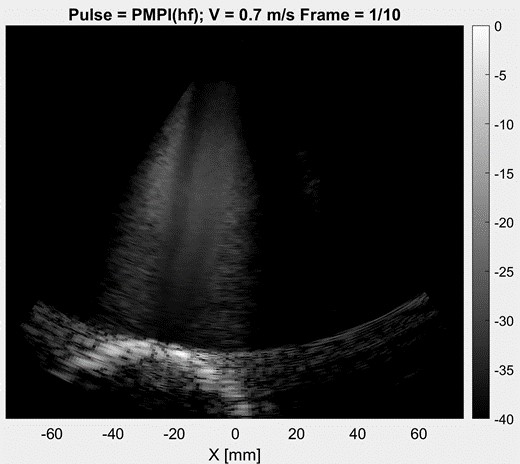MSc thesis project proposal
The effect of fast microbubble motion on contrast pulse sequences
Project outside the university
EMCIn order to isolate the microbubble signals from unwanted surrounding clutter signal (e.g. from surrounding tissue, valves and/or the lungs) contrast pulse sequences, which take advantage of the non-linear microbubble response to the phase and magnitude of the ultrasound pulse (in contrast to the linear scattering from tissue).The most common sequences used are sequentially transmitted pulses of alternating polarity (pulse inversion) or amplitude (amplitude modulation), which cancel the linear components of the scattered signal while preserving the non-linear components.
However, these contrast pulse sequences assume that there has not been significant microbubble motion over the duration of the received pulses, and that any phase changes in the received pulse are due to the microbubble response and not its motion. Simplistic simulations suggest that this is not the case for fast blood flows (0.6 – 1.2 m/s) which are common during filling and ejection in the left ventricle. The fast blood flow interferes with the cancellation of the linear component and may even cancel the non-linear components at certain combinations of bubble velocity and imaging frame-rate. These findings are also suggested from in-vivo and in-vitro experimental data. This is a serious problem in applications such as echo-particle image velocimetry, where the microbubbles need to be tracked between frames to obtain the velocity field information.
The purpose of this study is to investigate the effect of inter-pulse bubble displacement on the efficacy of contrast pulse sequences and determine how best to compensate-for or avoid this issue.
This project is in collaboration with Hans Bosch and Jason Voorneveld from Erasmus Medical Centre
Assignment
1. Perform realistic bubble response simulations, using a Rayleigh-Plesset model (or variation thereof) and obtain the acoustic response of bubbles to each pulse in the pulse sequences.
2. Determine how different contrast pulse sequences are affected by fast microbubble motion.
3. Corroborate the simulation results with in-vitro experimental data.
4. Investigate the possibility compensating for the bubble motion between pulses.
Requirements
· Background in biomedical engineering, physics or similar
· Knowledge of imaging processing and signal processing techniques
· Programming experience in Matlab and/or Python
Contact
prof.dr. Paddy French
Bioelectronics Group
Department of Microelectronics
Last modified: 2025-02-13
